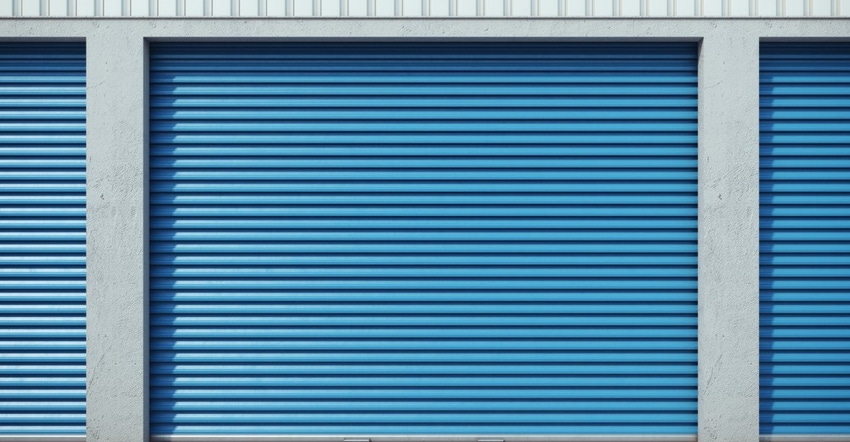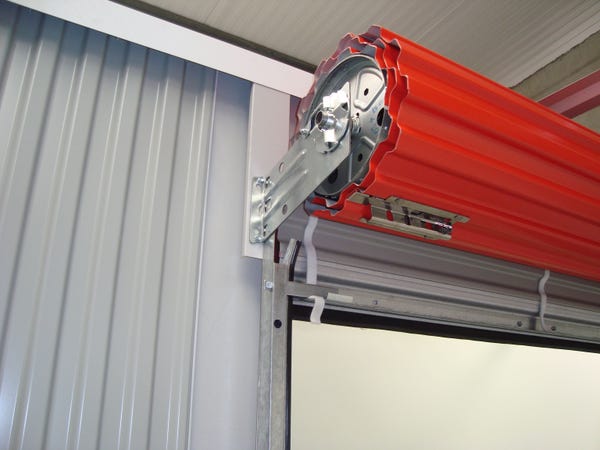- Site Maintenance and Safety
- Management and Operation
- Building Materials and Components
- Security and Technology
Your Guide to Self-Storage Door Cleanliness, Safety and Maintenance
Your self-storage unit doors are used by customers regularly. How they look and function is an important part of the tenant experience. Here’s how to keep them clean, fresh and in proper working order, as well as when to replace them.

Your self-storage unit doors are used by customers regularly, so they’re an important part of the tenant experience. The perceived safety, security and value of the entire facility rests heavily on how those doors look and function. If people get the impression that you don’t care about your own property, how can they believe you’ll care about protecting theirs? Chances are, they won't feel good about storing their valuables with you.
Knowing this, you need to make your doors a priority. Following is a guide for cleaning and maintaining them. I’ll also talk about when it’s time to replace them. The goal is to ensure customers have a good experience renting with you so they stick around for the long haul and refer others your way.
Cleanliness
Dirty, grimy unit doors can detract from your property’s curb appeal. In addition, if you don't properly care for your doors, the paint will eventually suffer, which will only lead to a decrease in property value.
Even newer doors need regular cleaning. Steel can pick up dust, dirt and road salt over time. Washing won’t only improve your facility appearance, it’ll protect the paint. Even if your doors aren't oxidized or faded yet, grime will still make your property look shabby. Consider these best practices:
Whenever possible, wash your doors in the shade or on a cloudy day to avoid water spots.
Use a small amount of mild, free-rinsing dish soap, like Dawn or Joy. These are gentle on your paint and rinse easily. Don’t use vinegar, which is acidic and can etch your aluminum hasps and bottom bars. Similarly, don’t use silicone-based products like Pledge, or oily products like WD-40, as they attract dirt and dust.
Use plain water. Never apply your soap solution to a dry surface, as it can cause steaking.
Wash by hand using a soft-bristled brush or microfiber towels like the ones you’d use on your car. Before you start, make sure there are no rocks or other debris trapped in the brush.
Rinse your doors completely with the soft spray of a hose, or just let the water run down the door). Don’t use a pressure washer or hard spray, as this can force water into the units and damage your paint.
Safety
If you don’t regularly maintain your roll-up doors, the effects of aging plus daily wear and tear will take their toll. While it’s important that your doors look good, safety is even more critical. If doors are running off track or difficult to open and close, they pose a risk to tenants and staff. Putting off maintenance or replacement isn’t worth someone getting hurt.
Aside from the ethical reasons to provide safe doors for tenants, there are legal ramifications to consider. If a malfunctioning door injures one of your customers or staff, you could be sued.
So, take regular stock of your doors, making sure they’re in proper working order. Maintenance does require time and energy, and it can even require unit access, so you have to plan ahead. It’s wise to include a line item in your annual budget to cover the time and materials you’ll need. Estimate the amount of staff time required, and notify tenants in advance of the project.
Maintenance
Now, let’s down to the nitty-gritty of door maintenance. If your roll-up doors didn’t include pre-greased springs at the time of purchase, you need to perform an annual checkup to ensure functionality and ease of use. Make sure the track alignment is correct and see if the springs need to be greased. (If you purchased a door in which the springs come pre-greased inside the barrel assembly, you can skip this step.)
In general, white lithium grease is an appropriate product to apply to springs. It ensures the door works smoothly, preventing any locking up or malfunctions. Important note: Never disassemble the springs themselves!
You might also need to check the door tension. If necessary, you can adjust both the left and right springs simultaneously. This allows the same tension on both sides of the door curtain, which ensures that when a customer opens his unit, the door will roll up and down evenly. To determine the appropriate tension, follow this test:
While the door is in the closed position, slide the latch open.
With minimal effort, begin to roll the door up. It should stop around your knees. It shouldn’t fall back down or go up much farther.
Continue to open the door, with slightly more effort, until it’s completely rolled up. The door should stay in that open position and not drift downward.

A roll-up door tensioning ratchet
When to Replace
Even the most meticulously maintained doors will eventually need replacement. When you notice chalking (a white oxidation that occurs as doors age) or fading, or the door is no longer functioning as it should, it’s time for a new one! While you might be tempted to paint or apply a restorative coating, this only adds to the problem, as it creates additional weight on the door, which could make it unsafe.
When doors age, it isn’t just the façade that takes a hit. The mechanics of the door slowly break down as well. Additional paint decreases functionality, leading to rough operation and potentially causing load-balance issues and spring failure.

Door replacement, before and after, at Public Storage in Ventura, Calif.
Broken springs are an issue most facility operators face at one point or another. When a spring is broken, it’ll be very difficult to open the door. If someone opens it forcibly, the entire curtain will simply “balloon” back into the unit instead of rolling around the axle assembly. This is definitely a situation in which the door will need to be replaced. However, before jumping straight to replacement, make sure that lack of spring tension isn’t the culprit.
Aside from the obvious aesthetic and improved functional appeal, there are considerable monetary benefits to a door-replacement project. By installing doors that are easy to operate, you can increase rental rates, qualify for insurance discounts, and take advantage of tax benefits such as cost segregation.
Always look out for broken springs, chalking or fading, and the inability to maintain appropriate tension. If there’s too much tension, the door will rocket into open position; if there’s too little, it could fall and hit someone. Unfortunately, this is a too common occurrence. Regular maintenance is key to ensure well-functioning, safe doors for your customers and staff.
Richard Lillie is vice president of the R3 Division at Janus International, a supplier of doors, hallways and technology to the self-storage industry. He’s been a member of the Janus team since 2008, helping self-storage owners with new construction and renovation projects. The company named him “Salesman of the Year” in 2009, 2014, 2018 and 2019. He’s also been a member of the board of directors for the North Carolina Self Storage Association since 2012. For more information, call 866.562.2580.
About the Author(s)
You May Also Like





